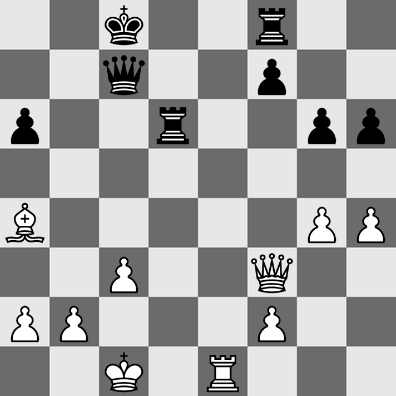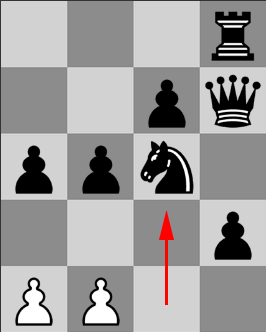 I sometimes hear from club players that ‘so and so plays like a boa constrictor! I feel like I don’t have any moves!’ And it’s true! The technique is no secret, but it is not easy to learn – which is why we won’t talk about it much. Often people mean that the pawns were closed up and their position was cramped while the other guy could do whatever he wanted, but a ‘boa’ can happen in a completely open position as well.
I sometimes hear from club players that ‘so and so plays like a boa constrictor! I feel like I don’t have any moves!’ And it’s true! The technique is no secret, but it is not easy to learn – which is why we won’t talk about it much. Often people mean that the pawns were closed up and their position was cramped while the other guy could do whatever he wanted, but a ‘boa’ can happen in a completely open position as well.
‘Constrictor’ play basically comes from controlling more of the board, but it also applies to games where both sides have seemingly equal space. So what does it really mean?
Square control, baby!
Well, I really mean ‘control of important patterns.’
Our first example is Karpov as white in a position that looks kind of 50-50, at least in terms of space. Black has active pieces and lacks only castling to be fine. Unfortunately, he should be castled queen side (!) where he has good pieces! (Castling king side would be asking for trouble!) The black player, GM Gyula Sax (a world championship candidate), said afterword “the most annoying thing was that I had very little appreciation of how this had happened or why!”
Indeed, from this position, white will sac an exchange – and then retreat! And yet black is left with no good plan while white has all the important activity!

Did you figure out the key faults in black’s position that allowed Karpov to squeeze? First and foremost was naturally that black could not castle safely, but what else? Look at the position after move 34 – white’s pieces are not even on black’s side of the board, but the game will be decided instantly from here, over in five moves. |
 Often the idea for a ‘boa constrictor’ comes from a single weakness in the endgame structure. Here is a game from Roman Dzindzichashvili where black’s queen side pawns are stuck in a bad pattern. This first image shows the pawn structure from earlier in the game. Why is it a potential problem for black but not for white? The red arrow is one clue – the black c-pawn is backward. But in the end, white only partly depended on this part of the pattern. To solve the question, ask yourself what would happen if any of these pawns is moved? Is it OK for black to play … a5? What about …b5? What will happen if white plays a pawn to the 5th rank?
Often the idea for a ‘boa constrictor’ comes from a single weakness in the endgame structure. Here is a game from Roman Dzindzichashvili where black’s queen side pawns are stuck in a bad pattern. This first image shows the pawn structure from earlier in the game. Why is it a potential problem for black but not for white? The red arrow is one clue – the black c-pawn is backward. But in the end, white only partly depended on this part of the pattern. To solve the question, ask yourself what would happen if any of these pawns is moved? Is it OK for black to play … a5? What about …b5? What will happen if white plays a pawn to the 5th rank?
Let’s see what happened in the game after white successfully played a5. Notice that white does not mind trading pieces because the problem in black’s position is structural – it is not going anywhere!
Now a couple of games from the King of Boa Constrictor Chess – Tigran Petrosian!
Remember the adage ‘knights on the rim are dim’. It is not a hard and fast rule, but Petrosian shows how to punish white’s last move, 18. Na4:
Even Fischer gets to feel the noose! This start position looks like white has a slight plus with a bit more queen side space. But no – there are deeper problems in black’s camp and Petrosian knows just exactly how to torture them:
Now look at the position after another 10 moves… and Fischer has been tied up into a nice little snack! Black controls 21 squares, white 35. Yes, some squares are contested, but black’s white squared bishop is worse than useless and the f7 knight looks pretty sad, too! To finalize our conclusion about such a position we have to ask ‘where is black’s counterplay?’ or ‘what plan can black have?’ Black only has one plan – to attempt king side expansion – but it is too little, too late. White has no king side weakness to exploit, so the plan is doomed:
+++++++++++++++++++ Today’s tactical patterns +++++++++++++++++++
These are “fix me” mating positions – to mate, you must fix a small problem first.
Queen to h2 does not mate – the king can escape to f3:
White’s king is in trouble, but both R:c4 and Nb5+ fail:
White is almost there, since he controls all the squares around black’s king…
